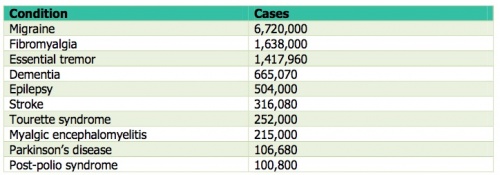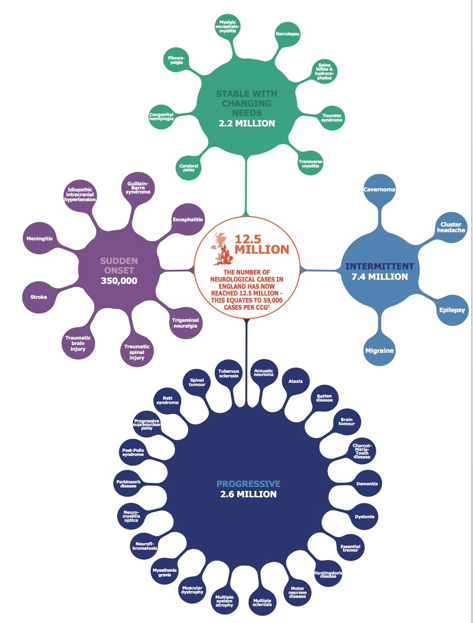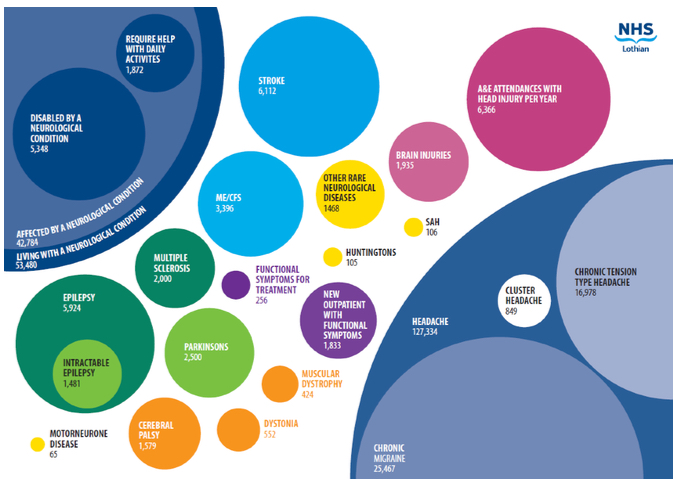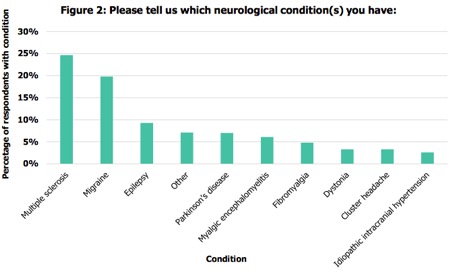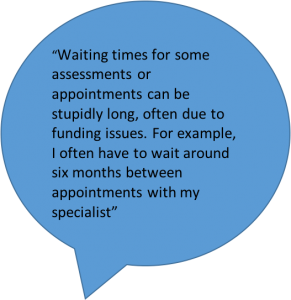Diversity of Private Physiotherapy Practice: Difference between revisions
No edit summary |
Sonja Murphy (talk | contribs) No edit summary |
||
| Line 25: | Line 25: | ||
<div class="researchbox"><span>Feed goes here!!|charset=UTF-8|short|max=10</span> </div> | <div class="researchbox"><span>Feed goes here!!|charset=UTF-8|short|max=10</span> </div> | ||
== References == References will automatically be added here, see <a href="Adding References">adding references tutorial</a>. <span class="fck_mw_references" _fck_mw_customtag="true" _fck_mw_tagname="references" /> | == References == References will automatically be added here, see <a href="Adding References">adding references tutorial</a>. <span class="fck_mw_references" _fck_mw_customtag="true" _fck_mw_tagname="references" /> | ||
= '''Neurological Physiotherapy''' = | |||
You have navigated yourself to this portion of the Wiki by recognising an interest you have in Neurological physiotherapy within the private setting. This section is designed to give an introduction into neurological physiotherapy, highlight the prevalence of neurological conditions within the UK, briefly discuss neurological physiotherapy services offered by the NHS with emphasis placed on two common conditions, stroke and Parkinson's disease, and conclude by outlining the benefits of private neurological physiotherapy. This will hopefully trigger questions for thought and reflection on whether neurological physiotherapy in the NHS or private practice is suitable for the career pathway you have in mind. <br> | |||
Firstly, we will aim to answer the basic question of "What is Neurological physiotherapy?" | |||
Neurological Physiotherapy is a specialist area of physiotherapy focused on the treatment of individuals with neurological conditions. Neurological disorders affect the functioning of the brain, spinal cord, and nerves. Stroke, multiple sclerosis, spinal cord injury and Parkinson’s disease are common neurological conditions <ref name="Neurological Alliance of Scotland">NEUROLOGICAL ALLIANCE OF SCOTLAND.,2016. Neurological conditions factsheet [online]. [viewed 31 October 2016]. Available from: http://www.scottishneurological.org.uk/content/res/Neurological_Conditions_Factsheet.pdf</ref>. It also includes conditions of the peripheral nervous system such as Guillain Barre Syndrome. Neurological conditions can have a devastating impact on the lives of the sufferers, along with family and friends. Disturbances in the travelling of messages between the brain and the body can result in the loss of movement, sensation, co-ordination, and balance. Other aspects of bodily function, such as perception, speech, memory, cognition, and behaviour may also be effected. Therefore, it is important that neurological physiotherapists work in close partnership with other members of the multidisciplinary team including speech and language therapists, occupational therapist, dieticians, nurses, and doctors. Effective communication between patient, family members, and the multidisciplinary team is critical to positive healthcare outcomes following a neurological disorder <ref name="Neurological Physiotherapy">NEUROLOGICAL PHYSIOTHERAPY., 2016. Neurological physiotherapy [online]. [viewed 31 October 2016]. Available from: http://neurologicalphysiotherapy.com</ref>. | |||
== '''The role of a Neurological Physiotherapist''' == | |||
Neurological physiotherapists are expeirenced and trained to treat neurological conditions with the aim to provide interventions which assist an individual to regain or maintain their maximum movement and functional independence. This is achieved by aiding in the development of new pathways through repetition and exercise. | |||
<br> | |||
== '''Treatment interventions''' == | |||
A number of treatment approaches are used, often incorporating a selection of the following as appropriate <ref name="Neurological Physiotherapy">: fckLRfckLRStretching&amp;amp;amp;amp;amp;amp;amp;amp;amp;amp;amp;amp;amp;amp;amp;amp;amp;amp;amp;amp;amp;amp;amp;amp;amp;amp;amp;amp;amp;amp;;amp;amp;gt;Strengthening&amp;amp;amp;amp;amp;amp;amp;amp;amp;amp;amp;amp;amp;amp;amp;amp;amp;amp;amp;amp;amp;amp;amp;amp;amp;amp;amp;amp;amp;amp;amp;amp;amp;amp;gt;Balance re-education&amp;amp;amp;amp;amp;amp;amp;amp;amp;amp;amp;amp;amp;amp;amp;amp;amp;amp;amp;amp;amp;amp;amp;amp;amp;amp;amp;amp;amp;amp;;amp;gt;Gait re-education&amp;amp;amp;amp;amp;amp;amp;amp;amp;amp;amp;amp;amp;amp;amp;amp;amp;amp;amp;amp;amp;amp;amp;amp;amp;amp;amp;amp;amp;amp;;amp;gt;Joint mobilization&amp;amp;amp;amp;amp;amp;amp;amp;amp;amp;amp;amp;amp;amp;amp;amp;amp;amp;amp;amp;amp;amp;amp;amp;amp;amp;amp;amp;amp;amp;;amp;gt;Electrical stimulation&amp;amp;amp;amp;amp;amp;amp;amp;amp;amp;amp;amp;amp;amp;amp;amp;amp;amp;amp;amp;amp;amp;amp;amp;amp;amp;amp;amp;amp;amp;amp;;amp;gt;Postural exercise&amp;amp;amp;amp;amp;amp;amp;amp;amp;amp;amp;amp;amp;amp;amp;amp;amp;amp;amp;amp;amp;amp;amp;amp;amp;amp;amp;amp;amp;amp;a;gt;Spasticity management&amp;amp;amp;amp;amp;amp;amp;amp;amp;amp;amp;amp;amp;amp;amp;amp;amp;amp;amp;amp;amp;amp;amp;amp;amp;amp;amp;amp;amp;amp;amp;amp;amp;amp;amp;amp;amp;amp;amp;amp;amp;amp;amp;amp;amp;amp;amp;amp;amp;amp;amp;amp;amp;amp;amp;amp;amp;amp;amp;amp;amp;amp;am;amp;gt;Advice/Education on lifestyle, fatigue management, and exercise&amp;amp;amp;amp;amp;amp;amp;amp;amp;amp;amp;amp;amp;amp;amp;amp;amp;amp;amp;amp;amp;amp;amp;amp;amp;amp;amp;amp;amp;amp;gt; fckLRfckLR&amp;amp;amp;amp;amp;amp;amp;amp;amp;amp;amp;amp;amp;amp;amp;amp;amp;amp;amp;amp;amp;amp;amp;amp;amp;amp;amp;amp;amp;amp;amp;amp;am;amp;gt;</ref> | |||
*Stretching | |||
*Strengthening | |||
*Balance re-education | |||
*Gait re-education | |||
*Joint mobilization | |||
*Electrical stimulation | |||
*Postural exercise | |||
*Spasticity management | |||
*Advice/Education on lifestyle, fatigue management, and exercise | |||
[[Image:Stop 2.jpg|left|400x400px]] | |||
[[Image:Time to reflect.jpg|400x400px]] . | |||
<br> | |||
'''Reflection Questions:''' | |||
1. Does the role of a neurological physiotherapist still interest me? | |||
2. Do I want to further investigate if working in the private sector would interest me?<br> | |||
If you have answered "yes" to the above questions, continue reading below. If not return to the career pathway in the introduction section and select another specialty that may be of interest. | |||
---- | |||
= '''Prevalence of Neurological Conditions''' = | |||
The Neurological Alliance <ref name="Neuro Numbers">THE NEUROLOGICAL ALLIANCE., 2014. Neurological alliance neuro numbers [online]. London: The Neurological Alliance. [viewed 31 October 2016]. Available from: http://www.neural.org.uk/store/assets/files/381/original/Final_-_Neuro_Numbers_30_April_2014_.pdf</ref> reported the total number of neurological cases in England to be 12.5 million or 59,000 cases per CCG in 2013-14, with a further 1 million cases in Scotland reported in the NHS QIS Clinical Standards on Neurological Health Services <ref name="NHS QIS">NATIONAL HEALTH SERVICE QUALITY IMPROVEMENT SCOTLAND., 2009. Neurological health services: Clinical standards.</ref>. <br> | |||
[[Image:Prevalence of neurological conditions.jpg|left|500px|Neurological Conditions cases.]] | |||
<br> | |||
This table<ref name="Neurological Conditions cases">THE NEUROLOGICAL ALLIANCE., 2015.The invisible patients: revealing the state of neurology services [online]. London: The Neurological Alliance. pp. 1-69.[viewed 31 October 2016]. Available from: http://www.neural.org.uk/store/assets/files/495/original/Invisible_patients_-_revealing_the_state_of_neurology_services_final_14_January_2015_.pdf</ref>represents the most common neurological conditions in England. | |||
<br> | |||
<br> | |||
<br> | |||
<br> | |||
<br> | |||
The image<ref name="Neuro Numbers" /> below illustrates the number of neurological conditions and the distribution of cases between progressive, intermittent, stable with changing needs, and sudden onset. | |||
<br> | |||
[[Image:Colourful splats.jpg|700x700px]] | |||
Within NHS Lothian, it is estimated 53,480 people are living with a neurological condition. The number of people disabled by the condition is 5,348 and an estimated 1,872 people will need assistance carrying out activities of daily living. Each year, a further 8,489 people in Lothian will be diagnosed with a neurological condition <ref name="Lothian Improvement Plan">NATIONAL HEALTH SERVICE LOTHIAN., 2015. Lothian neurological care improvement plan 2014 to 2017 [online]. [viewed 31 October 2016]. Available from: http://www.nhslothian.scot.nhs.uk/OurOrganisation/Strategies/Documents/NHS%20Lothian%20Neurological%20Care%20Improvement%20Plan%202014-2017%20-%20Final.pdf</ref>. The illustration below represents the number of people affected by neurological conditions in Lothian <ref name="Lothian Improvement Plan" />.<br> | |||
[[Image:NHS lothian.jpg|800x600px]] | |||
= '''Public perceptions of Neurological Conditions''' = | |||
A study conducted by Sue Ryder revealed that 45% of the UK population feared being impacted by a neurological condition the most which is compared to 36% who feared getting cancer. The study highlighted the beliefs of the public with regards to neurological conditions, showing that 26% of the public felt that “nothing much can be done” for people with neurological conditions <ref name="Sue Ryder">SUE RYDER., 2016. Public fear getting a neurological condition [online].[viewed 31 October 2016]. Available from: http://www.sueryder.org/media-centre/news/2016/june/public%20fear%20getting%20a%20neurological%20disorder</ref>. It is understandable why the general public fear being effected by a neurological condition when one takes into consideration patients poor experience with neurological healthcare. The Neurological Alliance conducted a [http://www.neural.org.uk/store/assets/files/495/original/Invisible_patients_-_revealing_the_state_of_neurology_services_final_14_January_2015_.pdf neurological patient experience survey] in 2014 <ref name="Neurological Conditions cases" />. <br> | |||
[[Image:Neurological patient experience survey profile.jpg|left|400x400px]] | |||
<br> | |||
[[Image:Neurological conditions in the survey.jpg|right|500x400px]]Figure 1 illustrates the population responding to this survey<br> | |||
<br> | |||
Figure 2 indicates the neurological conditions represented in the survey.<br> | |||
<br> | |||
<br> The survey stated that 58.1% (n=3402) of NHS England respondents (n=6916) have experienced difficulty accessing the service/treatment they require, 39.8% (n= 2357) of respondents had a 12-month waiting period from the time of observation of the first symptom to seeing a neurologist specialist, 31.5% of respondents (n=2140) had 5 or more GP visits related to the health problems experienced due to their condition prior to being referred to a neurological specialist, and 71.5% (n=4603) of respondents were not provided with a care plan to help manage their condition <ref name="Neurological Conditions cases" /> | |||
= '''Waiting times for NHS Neurological Services''' = | |||
<br>The 2005 [https://www.gov.uk/government/uploads/system/uploads/attachment_data/file/198114/National_Service_Framework_for_Long_Term_Conditions.pdf National Service Framework for Long-term Conditions] <ref name="The national service framework for longterm conditions">DEPARTMENT OF HEALTH., 2005. The national service framework for longterm conditions. Leeds: NSF.</ref> identified the need for prioritising an accurate and rapid diagnosis of neurological conditions, highlighting the importance of early diagnosis within this clinical population to reduce neurological damage, delay disease progression, elevate survival numbers, and enhance patient’s quality of life. However, it appears in 2014 that this call to action had not been achieved with 3,402 respondents to the neurological patient experience survey <ref name="Neurological Conditions cases" /> voicing concerns regarding challenges experienced trying to access the treatment and services they needed. | |||
[[Image:Quote 1.png|left|300x300px]] | |||
<br> | |||
<br> | |||
<br> | |||
Respondents opinions emphasized the concern of long waiting times especially transitioning from general practice to specialist care settings.<br><br>In December 2011, a survey of NHS Physiotherapy waiting times<ref name="NHS waiting time">JJ CONSULTING., 2011. A survey of NHS Physiotherapy waiting times, workforce and caseloads in the UK 2010-2011. London: CSP.</ref> in the UK was published, showing that in neurology departments, the longest wait reported was 2-4 weeks and 83% of neurological patients were seen in 8 weeks or less. The shortest wait was less than a week and the longest wait was 18-20 weeks.<br><br><br> | |||
<br> | |||
<br> | |||
<br> | |||
<br> | |||
Revision as of 12:58, 22 November 2016
Diversity of Private Physiotherapy Practice[edit | edit source]
Introduction [edit | edit source]
For many recently graduated [1] physiotherapists the idea of working in private clinics is an attractive work opportunity. Many people are unaware of the various physiotherapy services offered in the private physiotherapy sector outside of musculoskeletal practices. This wiki is aimed to be a tool to assist in increasing newly graduated physiotherapists awareness of these specialties such as neurological rehabilitation, pulmonary rehabilitation, vocational/occupational rehabilitation and physiotherapy in oncology. Each section will give an in depth discussion surrounding the importance and need for these areas of physiotherapy, the efficacy and importance in providing care in private practice setting followed by an outline of steps to start up your own private physiotherapy clinic.
Table of Contents[edit | edit source]
1. What is physiotherapy? Role of Physiotherapy
2. Development of scope of practice
3. Waitlists
4. Neurological Physiotherapy
5. Oncology Physiotherapy
6. Vocational Physiotherapy
7. Pulmonary Physiotherapy
8. How to set up you own private physiotherapy practice
Learning Outcomes:[edit | edit source]
1. The reader should be able to identify and discuss the potential diversities of the role of a physiotherapist within a private practice.
2. The learner should be able to critically discuss the use of private practices to aid in bridging the gap between the physiotherapy services offered by the NHS and the need/demand of various groups of service users in the community.
3. Reader should be able to compare and contrast physiotherapy services in each sector.
What is physiotherapy? Role of a Physiotherapist [edit | edit source]
Physiotherapy is an internationally recognized profession where the physiotherapist works with service users to identify and encourage their ability to maximise their movement and function while ensuring treatment is patient centred, effective and ethical (CSP 2013). A physiotherapist has professional autonomy, allowing the physiotherapist to have the ability and freedom to use their professional judgement regarding assessment, diagnosis, treatment and care within their scope and limits of knowledge and competence (Higgs et.al. 2001). The WCPT define physiotherapy as:
“Physical therapy is concerned with identifying and maximising quality of life and movement potential within the spheres of promotion, prevention, treatment/intervention, habilitation and rehabilitation. This encompasses physical, psychological, emotional, and social wellbeing. Physical therapy involves the interaction between the physical therapist, patients/clients, other health professionals, families, care givers and communities in a process where movement potential is assessed and goals are agreed upon, using knowledge and skills unique to physical therapists (WCPT 2011).”
The statement above demonstrates the use of a holistic approach to asses and treat service users. Many presenting symptoms can originate or be influenced by social or emotional factors therefore in order to provide truly patient centred care and improve quality of life, all aspects of the service users life such as emotional, social and physiological must be incorporated into assessment and treatment.
Physiotherapists can work in a variety of environments from hospitals, private practice clinics, community based rehabilitation centres, outpatient clinics, to schools and workplaces (WCPT 2011). The scope of physiotherapy is not limited to the role in a clinic surround patient care but as well as influence public health strategies, advocating patient health, teaching, research and helping to develop health policy (WCPT 2011).
Further reading:[edit | edit source]
- CSP physiotherapy framework available here: https://v3.pebblepad.co.uk/v3portfolio/csp/Asset/View/6jqbh3GzhGWrrcGqpknwmZzh8Z = Sub Heading 3 =
== References == References will automatically be added here, see <a href="Adding References">adding references tutorial</a>. <span class="fck_mw_references" _fck_mw_customtag="true" _fck_mw_tagname="references" />
Neurological Physiotherapy[edit | edit source]
You have navigated yourself to this portion of the Wiki by recognising an interest you have in Neurological physiotherapy within the private setting. This section is designed to give an introduction into neurological physiotherapy, highlight the prevalence of neurological conditions within the UK, briefly discuss neurological physiotherapy services offered by the NHS with emphasis placed on two common conditions, stroke and Parkinson's disease, and conclude by outlining the benefits of private neurological physiotherapy. This will hopefully trigger questions for thought and reflection on whether neurological physiotherapy in the NHS or private practice is suitable for the career pathway you have in mind.
Firstly, we will aim to answer the basic question of "What is Neurological physiotherapy?"
Neurological Physiotherapy is a specialist area of physiotherapy focused on the treatment of individuals with neurological conditions. Neurological disorders affect the functioning of the brain, spinal cord, and nerves. Stroke, multiple sclerosis, spinal cord injury and Parkinson’s disease are common neurological conditions [2]. It also includes conditions of the peripheral nervous system such as Guillain Barre Syndrome. Neurological conditions can have a devastating impact on the lives of the sufferers, along with family and friends. Disturbances in the travelling of messages between the brain and the body can result in the loss of movement, sensation, co-ordination, and balance. Other aspects of bodily function, such as perception, speech, memory, cognition, and behaviour may also be effected. Therefore, it is important that neurological physiotherapists work in close partnership with other members of the multidisciplinary team including speech and language therapists, occupational therapist, dieticians, nurses, and doctors. Effective communication between patient, family members, and the multidisciplinary team is critical to positive healthcare outcomes following a neurological disorder [3].
The role of a Neurological Physiotherapist[edit | edit source]
Neurological physiotherapists are expeirenced and trained to treat neurological conditions with the aim to provide interventions which assist an individual to regain or maintain their maximum movement and functional independence. This is achieved by aiding in the development of new pathways through repetition and exercise.
Treatment interventions[edit | edit source]
A number of treatment approaches are used, often incorporating a selection of the following as appropriate [3]
- Stretching
- Strengthening
- Balance re-education
- Gait re-education
- Joint mobilization
- Electrical stimulation
- Postural exercise
- Spasticity management
- Advice/Education on lifestyle, fatigue management, and exercise
Reflection Questions:
1. Does the role of a neurological physiotherapist still interest me?
2. Do I want to further investigate if working in the private sector would interest me?
If you have answered "yes" to the above questions, continue reading below. If not return to the career pathway in the introduction section and select another specialty that may be of interest.
Prevalence of Neurological Conditions[edit | edit source]
The Neurological Alliance [4] reported the total number of neurological cases in England to be 12.5 million or 59,000 cases per CCG in 2013-14, with a further 1 million cases in Scotland reported in the NHS QIS Clinical Standards on Neurological Health Services [5].
This table[6]represents the most common neurological conditions in England.
The image[4] below illustrates the number of neurological conditions and the distribution of cases between progressive, intermittent, stable with changing needs, and sudden onset.
Within NHS Lothian, it is estimated 53,480 people are living with a neurological condition. The number of people disabled by the condition is 5,348 and an estimated 1,872 people will need assistance carrying out activities of daily living. Each year, a further 8,489 people in Lothian will be diagnosed with a neurological condition [7]. The illustration below represents the number of people affected by neurological conditions in Lothian [7].
Public perceptions of Neurological Conditions[edit | edit source]
A study conducted by Sue Ryder revealed that 45% of the UK population feared being impacted by a neurological condition the most which is compared to 36% who feared getting cancer. The study highlighted the beliefs of the public with regards to neurological conditions, showing that 26% of the public felt that “nothing much can be done” for people with neurological conditions [8]. It is understandable why the general public fear being effected by a neurological condition when one takes into consideration patients poor experience with neurological healthcare. The Neurological Alliance conducted a neurological patient experience survey in 2014 [6].
Figure 1 illustrates the population responding to this survey
Figure 2 indicates the neurological conditions represented in the survey.
The survey stated that 58.1% (n=3402) of NHS England respondents (n=6916) have experienced difficulty accessing the service/treatment they require, 39.8% (n= 2357) of respondents had a 12-month waiting period from the time of observation of the first symptom to seeing a neurologist specialist, 31.5% of respondents (n=2140) had 5 or more GP visits related to the health problems experienced due to their condition prior to being referred to a neurological specialist, and 71.5% (n=4603) of respondents were not provided with a care plan to help manage their condition [6]
Waiting times for NHS Neurological Services[edit | edit source]
The 2005 National Service Framework for Long-term Conditions [9] identified the need for prioritising an accurate and rapid diagnosis of neurological conditions, highlighting the importance of early diagnosis within this clinical population to reduce neurological damage, delay disease progression, elevate survival numbers, and enhance patient’s quality of life. However, it appears in 2014 that this call to action had not been achieved with 3,402 respondents to the neurological patient experience survey [6] voicing concerns regarding challenges experienced trying to access the treatment and services they needed.
Respondents opinions emphasized the concern of long waiting times especially transitioning from general practice to specialist care settings.
In December 2011, a survey of NHS Physiotherapy waiting times[10] in the UK was published, showing that in neurology departments, the longest wait reported was 2-4 weeks and 83% of neurological patients were seen in 8 weeks or less. The shortest wait was less than a week and the longest wait was 18-20 weeks.
- ↑ HARIDJ 2004. FJFHDLFSDSF
- ↑ NEUROLOGICAL ALLIANCE OF SCOTLAND.,2016. Neurological conditions factsheet [online]. [viewed 31 October 2016]. Available from: http://www.scottishneurological.org.uk/content/res/Neurological_Conditions_Factsheet.pdf
- ↑ 3.0 3.1 NEUROLOGICAL PHYSIOTHERAPY., 2016. Neurological physiotherapy [online]. [viewed 31 October 2016]. Available from: http://neurologicalphysiotherapy.com Cite error: Invalid
<ref>tag; name "Neurological Physiotherapy" defined multiple times with different content - ↑ 4.0 4.1 THE NEUROLOGICAL ALLIANCE., 2014. Neurological alliance neuro numbers [online]. London: The Neurological Alliance. [viewed 31 October 2016]. Available from: http://www.neural.org.uk/store/assets/files/381/original/Final_-_Neuro_Numbers_30_April_2014_.pdf
- ↑ NATIONAL HEALTH SERVICE QUALITY IMPROVEMENT SCOTLAND., 2009. Neurological health services: Clinical standards.
- ↑ 6.0 6.1 6.2 6.3 THE NEUROLOGICAL ALLIANCE., 2015.The invisible patients: revealing the state of neurology services [online]. London: The Neurological Alliance. pp. 1-69.[viewed 31 October 2016]. Available from: http://www.neural.org.uk/store/assets/files/495/original/Invisible_patients_-_revealing_the_state_of_neurology_services_final_14_January_2015_.pdf
- ↑ 7.0 7.1 NATIONAL HEALTH SERVICE LOTHIAN., 2015. Lothian neurological care improvement plan 2014 to 2017 [online]. [viewed 31 October 2016]. Available from: http://www.nhslothian.scot.nhs.uk/OurOrganisation/Strategies/Documents/NHS%20Lothian%20Neurological%20Care%20Improvement%20Plan%202014-2017%20-%20Final.pdf
- ↑ SUE RYDER., 2016. Public fear getting a neurological condition [online].[viewed 31 October 2016]. Available from: http://www.sueryder.org/media-centre/news/2016/june/public%20fear%20getting%20a%20neurological%20disorder
- ↑ DEPARTMENT OF HEALTH., 2005. The national service framework for longterm conditions. Leeds: NSF.
- ↑ JJ CONSULTING., 2011. A survey of NHS Physiotherapy waiting times, workforce and caseloads in the UK 2010-2011. London: CSP.


